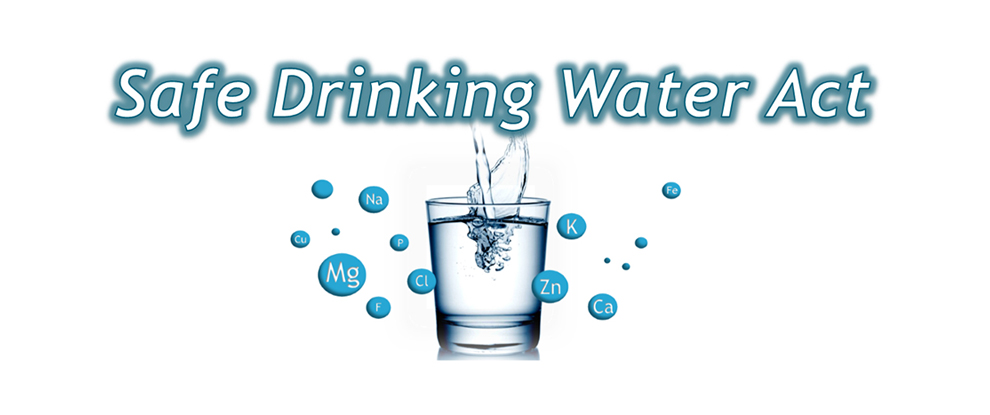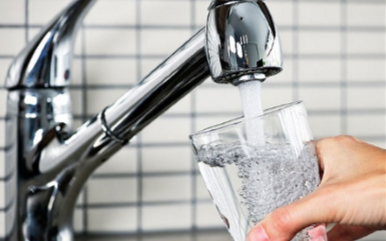
System-Specific Information
If you are looking for information relating to a certain YPG water system, please refer to the Consumer Confidence Report (CCR) for system-specific information.
What YPG Does

At YPG we monitor our three water systems for every federally regulated contaminant. The contaminants listed inside of the annual Consumer Confidence Report (CCR) are ones which were detected in your water; there are many additional contaminants that were monitored for but were not detected in your water and therefore are not listed in this report. Drinking water samples are collected from the treatment plant at the entry point to the distribution system (EPDS) and from water taps in the service area as required by federal regulations. Samples are sent to an Arizona Department of Health Services (ADHS) and EPA accredited laboratory for analysis. Results for the most recent monitoring through the end of 2018 for each contaminant are provided in this CCR.
The state allows us to monitor for some contaminants less than once per year because the concentrations of these contaminants do not change frequently. Some of our data, though representative, are more than one year old.
ADEQ has the authority to enforce federal regulations regarding drinking water. The results are reported to ADEQ and also kept on file by the YPG Environmental Sciences Division.

Information About Federal Regulations
In order to ensure that tap water is safe to drink, the U.S. Environmental Protection Agency (EPA) and Arizona Department of Environmental Quality (ADEQ) prescribe regulations that limit the amount of certain contaminants in water provided by public water systems. The U.S. Food and Drug Administration regulations also establish limits for contaminants in bottled water that provide the same protection for public health.
Primary vs. Secondary Drinking Water Regulations
The EPA sets Current Drinking Water Standards for drinking water. These standards are made up of the National Primary Drinking Water Regulations and the National Secondary Drinking Water Regulations.
The Primary Standards set levels of contaminants that may pose a health risk when present in drinking water supplies and are known or anticipated to occur in public water systems. The Primary Standards contaminants are divided into Inorganic Chemicals, Organic Chemicals, Radionuclides, and Microorganisms.
The Secondary Standards are non-enforceable guidelines that establish recommendations for contaminants that may cause cosmetic effects such as skin or tooth discoloration and aesthetic effects such as taste, odor and color. The EPA recommends Secondary Standards for water treatment systems but does not require systems to comply.
About Lead and Copper
Lead and copper are rarely found in source waters; however, both of these metals can enter drinking water by leaching from household plumbing and fixtures. Water that sits in your pipes for long periods of time may dissolve tiny amounts of lead and/or copper (parts per billion levels) into household water. The EPA has developed a rule to minimize the levels of these metals in drinking water.
The Lead and Copper Rule was developed to protect public health by establishing an action level of 15 parts per billion (ppb) for lead and 1.3 parts per million (ppm) for copper at the tap.
If present, elevated levels of lead can cause serious health problems, especially for pregnant women and young children. Lead in drinking water is primarily from materials and components associated with service lines and home plumbing.
YPG is responsible for providing high quality drinking water but cannot control the variety of materials used in plumbing components. While YPG monitoring consistently shows levels well below the Action Level (AL), due to the age of some homes and buildings it is reasonable to assume there are outdated plumbing materials throughout the distribution system that could contribute to the levels of lead and/or copper.
If your water has been sitting in your household plumbing for several hours, you can minimize the potential for lead exposure by flushing your tap for 30 seconds to 2 minutes before using water for drinking or cooking. If you do so, you may wish to collect the flushed water and reuse it for another beneficial purpose, such as watering plants. If you are concerned about lead in your water, you may wish to have your water tested. Information on lead in drinking water, testing methods, and steps you can take to minimize exposure is available from the Safe Drinking Water Hotline at 1 (800) 426-4791 or at www.epa.gov/safewater/lead.

For more information on anything relating to YPG drinking water, please contact Ms. Kimberly Rios, Safe Drinking Water Program Manager.
Call: (928) 328-2977
E-mail: angela.m.ballinger.civ@army.mil
